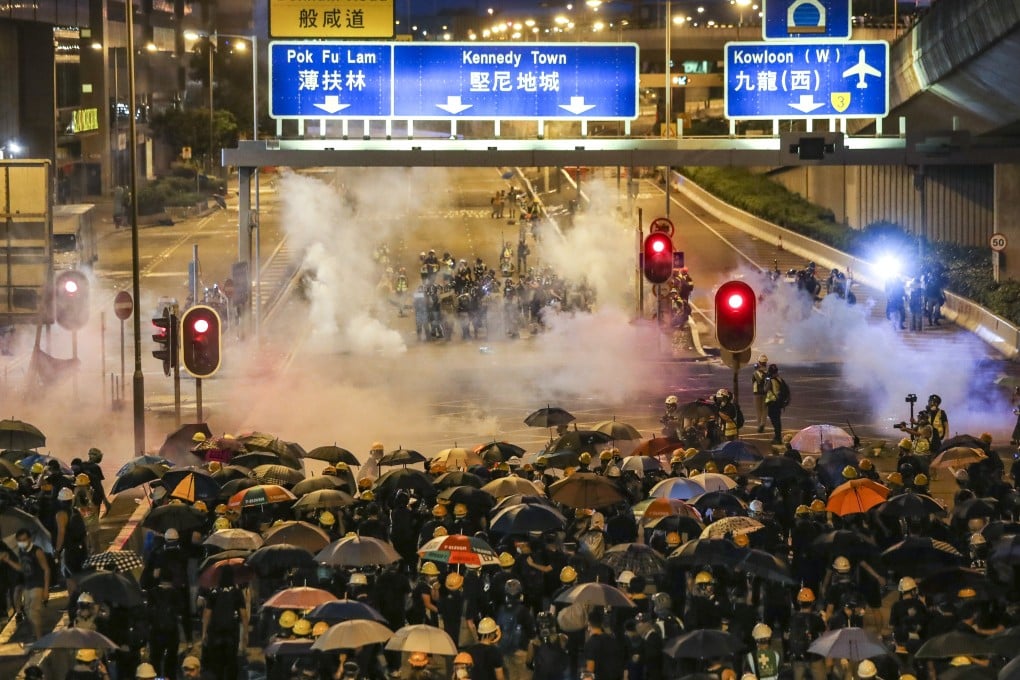Advertisement
Beijing to respond to social unrest in Hong Kong after more violent clashes following protest rally
- Hong Kong and Macau Affairs Office will give its stance and views on the situation – the first time it has held a press briefing on city since the handover
- Announcement comes as some of Hong Kong Island’s busiest districts again become a battleground between protesters and riot police
Reading Time:4 minutes
Why you can trust SCMP

China’s top Hong Kong policy office will on Monday respond for the first time to escalating civil unrest that has beset the city’s government since June.
The announcement came as anti-government protesters clashed with riot police outside the central government’s liaison office in Hong Kong for a second consecutive weekend.
The Hong Kong and Macau Affairs Office (HKMAO) under the State Council, China’s cabinet, will hold a press conference in Beijing to give “its stance and views on Hong Kong’s current situation”, according to a central government notice.
Advertisement
It will be the first time the HKMAO has held a press briefing on the city since Britain handed it over to China in 1997. It also suggests the Chinese leadership may have reached a decision on Hong Kong since a wave of mass protests and violent clashes over a now-shelved extradition bill began nearly two months ago.
The proposed legislation would have allowed the transfer of criminal suspects to jurisdictions including mainland China, where critics say there is no guarantee of a fair trial.
Advertisement
Beijing strongly condemned protesters who defaced the national emblem and spray-painted anti-Chinese slogans on the liaison office building in Sai Ying Pun a week ago, and public sentiment on the mainland towards Hong Kong has become noticeably more negative since.
Advertisement
Select Voice
Choose your listening speed
Get through articles 2x faster
1.25x
250 WPM
Slow
Average
Fast
1.25x